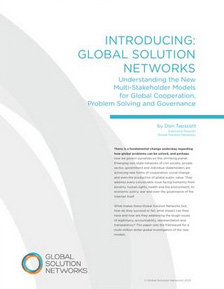Nicholas Negroponte, founder and chair of the One Laptop per Child Foundation, just posted an open letter to the Indian government, offering to share his hard-earned expertise and help the government achieve its recently announced goal to distribute a $35 tablet computer to millions of students. (Full disclosure: Negroponte is a good friend.)
The new device, designed by Indian scientists but manufactured in China, would be the world’s cheapest tablet and run on either battery or solar power. The touch-screen device would use Linux, be equipped with an Internet browser, a media player, a reader for PDF files and video-conferencing abilities. The design includes two gigabytes of RAM and Wi-Fi connectivity.
The government’s initiative is desperately needed. At 64 percent, India’s literacy rate is appallingly low. By contrast, China’s rate is 94 percent. Improving India’s education system and boosting literacy is essential to raising the standard of living. With a population of 1.26 billion, India had just over 15 million Internet users as of December 2009. Incredibly, the usage trend is going the wrong way: Internet minutes consumed had actually fallen from their peak during December 2008.
So far, Negroponte’s foundation has distributed 2 million laptops to students in more than 40 countries. In his letter, he encourages the Indian government to send a team to the foundation’s offices in Cambridge, saying it would have full access to all of the foundation’s technology at no cost. “As a humanitarian and charitable organization, we do not compete. We collaborate, and invite you to do so, too.”
Negroponte offers six high-level suggestions:
- Focus on children 6 to 12 years old. They are your nation’s most precious natural resource. For primary school children, the tablet is not about computing or school, it is about hope. It makes passion the primary tool for learning.
- Your tablet should be the death of rote learning, not the tool of it. A creative society is built not on memorizing facts, but by learning learning itself. Drill and practice is a mechanism of the industrial age, when repetition and uniformity were systemic. The digital age is one of personalization, collaboration and appropriation. OLPC’s approach to learning is called constructionism. We hope you adopt it too.
- Tablets are indeed the future. OLPC announced its own eight months ago. However, caution is needed with regard to one aspect of tablets: learning is not media consumption. It is about making things. The iPad is a consumptive tool by design. OLPC urges that you not make this mistake.
- Hardware is simple. Less obvious is ruggedness, sunlight readability and low power. We use solar power because our laptop is by far the lowest power laptop on the planet. But do not overlook human power – hand cranking and other things that kids can do at night or when it rains. Just solar would be a mistake. Rugged means water resistant and droppable from 10 feet onto a stone floor.
- Software is harder. Linux is obvious, but whatever you do, do not make it a special purpose device with only a handful of functions. It must be a general purpose computer upon which the whole world can build software, invent applications and do programming. We know that when children program they come the closest to thinking about thinking. When they debug, they are learning about learning. This is key.
- More than anything, of all the unsolicited advice I have to offer, the most important and most likely to be overlooked is good industrial design. Make an inexpensive tablet, not a cheap one. Make it desirable, lovable and fun to own. Take a page from Apple on this, maybe from OLPC too. Throw the best design teams in India behind it.
These are sensible suggestions, and the Indian government should take heed. This is not the first time India has announced cheap computers for the masses, but this project shows real promise. As the cost of computer components go down, the chances of success go up.






The broader points about changing education (#2 and #3) are particularly important. From what I have seen so far of the iPad (alas, no first hand experience yet), it is more like “interactive TV” than a computer. I hope this new Indian device has a well thought out input mechanism (either an external keyboard or highly functional on-screen touch keyboard/handwriting recognition system) so that students can create interesting materials.
Hmmm. Canada-Maya Scholarships, of the group PASO POR PASO of Orillia, has seven scholars in university. Not all of them have computers. I just took two beaten up laptops down to Guatemala, one caved the first week. I bought one for $500 USA for the medical student going to Cuba to finish his studies. The other medical student in Quetzaltenango has to go to the Internet cafe or use on at Universidad San Carlos campus, which is maybe OK since he is genius level. But I could use some of these, and how do I get my hands on them? Roger Pretty http://mayanfund.wordpress.com
India's literacy rate is over 70%, this is B.S. Census 2001 indicates that India's literacy rate was 61%. Every year, India's literacy rate rises by 1-1.5 % which means that by August 2010, it's literacy rate is around 75-77%. That's one thing. Another thing is that India has around 80-90 million internet users, not 15 million. This guy is giving you the wrong figures.
Plus, let me point out that recently, according to your UNICEF, the adult literacy rate of women (as of 2003-2007) is 71%. Male literacy rate is much much higher. Here's the stats:http://www.unicef.org/infobycountry/india_statistics.html#67
Now, although I personally don't trust UNICEF, but many Westerners rely upon stats and figures, so for them, there are stats on UNICEF.
Youth (15–24 years) literacy rate, 2003–2007*,male is 87% and Youth (15–24 years) literacy rate, 2003–2007*, female is 77%. This was between 2003-2007. Right now, it's August of 2010. So, you can imagine that literacy rate must be a lot higher by now.